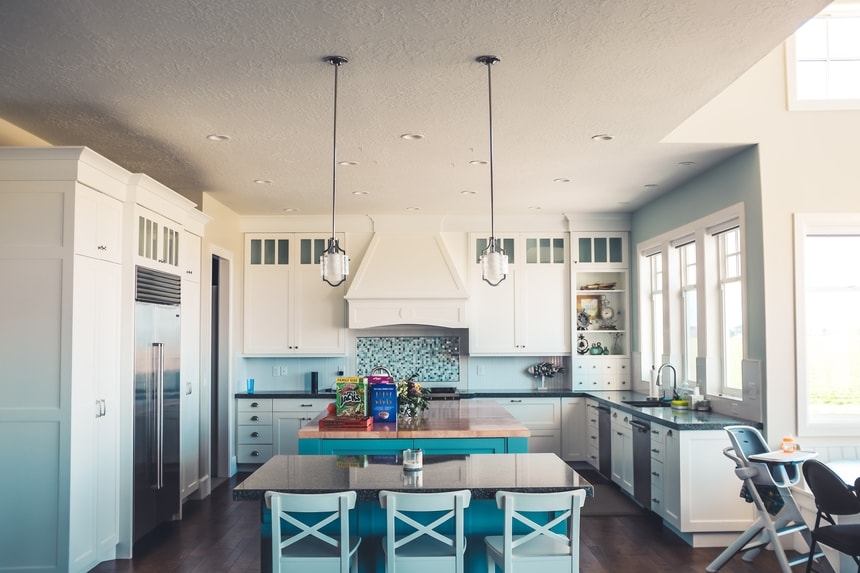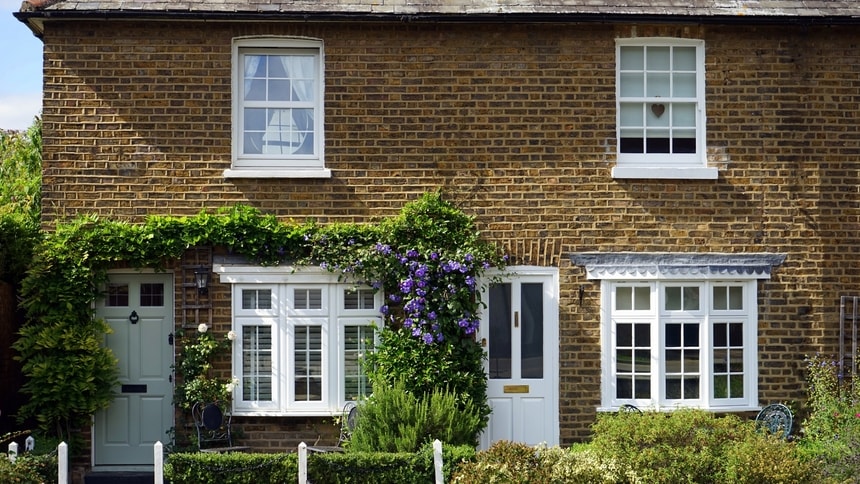Table of Contents
- Intergenerational Homes in the US
- Intergenerational Homes Help Seniors to Live a Fulfilling and Well-Functioning Life
- How Intergenerational Homes Benefit Other Age Groups
- The Need for Intergenerational Homes
- The Challenges of Intergenerational Living

An intergenerational home refers to a house that is designed to house multiple generations at once. This means that grandparents, parents, and children in the same family can live under one roof. While this may sound awkward (perhaps even nightmarish) to some, there are many ways of designing intergenerational homes so that three generations can comfortably co-habit. Emma Garland, a researcher who published a report in 2018 titled ‘Learning from Intergenerational Housing Projects in the USA’, outlines some common features of intergenerational housing:
- Enables people of different ages to live side by side as good neighbors, to share their talents and resources, develop meaningful relationships and support each other
- Fosters programs, policies, and practices that promote engagement, cooperation, interaction, and exchange between residents of different generations
- Provides adequately for the safety, health, education and basic necessities of life for people of all ages, by taking a partnership or community-led approach to the delivery of services and/or activities
- Has private spaces and communal areas intended for collective use.
Intergenerational homes are on the rise (and might need to become more normalized), partly due to the housing shortage and the rise in the cost of housing. In this article, we will explore the trend of intergenerational homes, highlight the key reasons why such homes can be beneficial, and then note some of the challenges posed by intergenerational housing.
Intergenerational Homes in the US
The US is full of intergenerational housing projects. Indeed, the country has embraced intergenerational living, with the young and the old living side by side, and the proliferation and success of this way of living can provide a suitable model for other countries to follow.

According to Pew Research Center data, in 2014, 60.6 million people (19% of the population) lived in intergenerational homes. In 2016, this figure rose to 64 million people or 20% of the population. This data clearly shows just how common it is for people to live in a household with two or more adult generations or one that includes grandparents and grandchildren. 64 million Americans living in intergenerational homes is a record number of people. It seems that housing in the US is, in a sense, returning to how it used to be back in the 50s, as this is when 21% of Americans lived in intergenerational homes. Intergenerational living hasn’t always been this common. By 1980, for example, according to Pew, only 12% of homes were multigenerational.
Now, let’s unpack some of the reasons that intergenerational homes in the US are on the rise.
Millennials Struggling to Get on the Property Ladder
Millennials, those born between 1981-1996, are finding it incredibly difficult to get on the property ladder. This is occurring for a wide range of reasons, including the burden of student debt, financial insecurity, and the high cost of housing. The result is that 15% of 25- to 35-year-olds in the US lives with their parents. Donna Butts, executive director of Generations United, a non-profit that promotes intergenerational living, argues that many young adults today are much closer to their parents than previous generations were and don’t feel they’re being a burden by living at home. Of course, there is still a stigma attached to the notion of millennials living at home with their parents. It conjures up stereotypes of millennials being mollycoddled and staying stuck in a state of adolescence. However, Butt believes this stigma is disappearing. Many millennials understand that this living situation can be financially sensible and certainly nothing to be ashamed of.

Financial Reasons
Affordability is one of the main motivations for families to opt for intergenerational living. Given the economic climate and housing situation, this type of housing can benefit all family members. The cost of buying a home has increased significantly since the 60s, with reports indicating that the cost of housing will rise at twice the speed of inflation and pay. Affordable housing in the US is, therefore, in short supply. The high cost of housing also means that many baby boomers (those born between 1946-1964) are still paying off mortgages and don’t have enough money saved for a comfortable retirement.
Most seniors (90%) want to stay in their current home, citing a wide range of reasons for being hesitant about moving into senior living. However, it may be financially challenging for seniors to maintain independent living if they are retired and still have a mortgage to pay off or rent to pay. Many older adults also do not have enough retirement savings to support themselves. This is partly because people are living much longer, so seniors (and future seniors) will need to stretch their savings for much longer than used to be the case.

Intergenerational housing, however, can help lessen the financial burden that baby boomers, Gen Xers (those born between 1961 and 1981) and seniors experience, allowing them, as well as younger adults, to share the financial cost of the intergenerational home. Obviously, to build and maintain one fully-functional home will be less expensive than doing the same for three homes housing three generations. A multigenerational home can save on space, resources, and bills, without sacrificing functionality and quality of life.
Family members will often financially support each other when it comes to housing. For example, parents may help out their adult children with deposits for houses or rent. Baby boomers may also support their parents in terms of care home fees – or it may be the grandparents who are providing financial assistance. Intergenerational homes are a way of reducing the financial burden of every family member in terms of housing, making it much easier for everyone to have a roof over their head while living within their means.
Loneliness Among Seniors
28% of seniors (13.8 million people) live alone. For many older adults, this results in persistent social isolation and feelings of loneliness. As social creatures, it’s extremely important that we have regular social interaction. Without it, many psychological problems become more likely to occur, such as depression and cognitive decline, as well as physical issues like high blood pressure, heart disease, obesity, a weakened immune system, Alzheimer’s disease, and early death. Since older adults may live with multiple chronic health conditions, this segment of the population needs to engage in regular social activity, so that their health isn’t worsened. But given the figures on the numbers of seniors living alone and reported feelings of loneliness, it seems that many older adults are putting their health at serious risk.

Intergenerational homes, nevertheless, can be a way of getting around this issue. Many older adults may want to live close to their children and grandchildren as they age. Conversely, baby boomers and Gen Xers may want to ensure that their parents are physically and mentally well. Unfortunately, society has become fragmented, with family members living further and further apart. This has made it much more difficult for family members to spend quality time with each other and to provide emotional support when it’s needed. Many families are opting to live in intergenerational homes so that older family members don’t end up living a life of isolation and loneliness.
Intergenerational Homes Help Seniors to Live a Fulfilling and Well-Functioning Life
In her report, Garland describes the many different types of intergenerational housing projects that she encountered while traveling throughout the US. For example, she examined the H.O.M.E Project in Chicago, where older people who need assistance, young adults, and families with children all reside in the same building, which has a family-like environment. (Here, it should be noted that intergenerational homes do not necessarily have to comprise different generations who are related to each other.)
She also looked at intergenerational homes where students lived with independent seniors or older adults who require assisted living. This kind of assistance can range from helping older co-residents with cleaning, cooking meals, and getting around to simply spending time doing certain activities together. In living situations of this sort, students often enjoy reduced rent or even free accommodation. For young people in general, who may be struggling to afford rent and bills, living with an unrelated older adult and helping out, while enjoying subsidized rent, can be an attractive option. This type of living arrangement may also allow young people to access better quality housing.

In other models of intergenerational homes, older residents live alongside foster or adoptive families. Under this type of living arrangement, older adults help to provide foster children with a stable environment by being a constant feature in their life and by offering a sense of community. Seniors living in this type of intergenerational home can also offer support to the foster parents. Older adults benefit from this situation by gaining a sense of purpose and establishing meaningful relationships, both of which help to improve quality of life and overall well-being.
Intergenerational homes can be set up in all sorts of ways that contribute to the psychological and physical health of older adults. For example, young people and adults can support seniors if they experience loneliness, a chronic health condition, chronic pain, cognitive decline, mobility issues, falls and accidents, or mental health issues. For children and grandchildren supporting grandparents, living in the same house can reduce the stress and time commitments that can be at play when younger generations want to support older family members but have to travel (sometimes quite far) in order to do so.
In her report, Garland underscored some of the common benefits of intergenerational living that older adults can enjoy:
- Remain integrated into society and continue to contribute in meaningful ways which can help them gain a renewed sense of self-worth
- Improve their physical and mental health by maintaining their personal independence and their own decision-making
- Feel less lonely and/or socially isolated because they can expand their social network
- Be active agents in their own lives rather than the passive recipient of services
- Prevent or delay their admission to more expensive options such as care homes due to the community spirit, sense of family and practical assistance fostered in intergenerational housing
- Generally improve their quality of life – many older people in intergenerational housing say they feel not only healthier and more positive, but more confident in getting out and about, and interacting with others in the community
How Intergenerational Homes Benefit Other Age Groups
In carrying out her research, Garland noticed that it wasn’t just older adults who benefited from intergenerational homes; it was younger generations, too. For example, this way of living helps younger generations:
- Access better quality or more affordable housing
- Gain relevant experience to help their careers and studies
- Benefit from the knowledge and wisdom of older people
- Increase their confidence in communicating with older people
- Make improvements in their learning and academic performance
Moreover, anyone living in an intergenerational home, regardless of his or her age, can:
- Gain a better understanding of what the other generation has to offer which can help to break down barriers between generations and cultures
- Develop meaningful relationships and friendships
- Have opportunities for reciprocal learning
In this way, we can see that multigenerational housing is often mutually beneficial for all co-residents, which helps to explain why this living arrangement is becoming more popular again, not just in the US, but all over the world. Many researchers and experts, such as Garland, strongly believe that we need to promote intergenerational homes. Let’s delve into some of the reasons that Garland presents.

The Need for Intergenerational Homes
One of the main reasons to promote multigenerational homes is that many countries, including the US, are becoming increasingly age-segregated. The general trend is that rural areas are becoming older and urban areas are becoming younger. This is because younger people are moving to cities for work and suburban or rural housing is unaffordable for them. Increased mobility and busy working lives also mean that we’re all less likely to spend time with our extended family, with work also resulting in less contact between the generations. Stephen Burke, from the think tank United for All Ages, highlights that age segregation has negative social consequences. He highlights:
“The mistrust that arises from such divisions is fuelled by the lack of connection between different generations. This can breed myths and stereotypes, misunderstanding, ageism and exclusion. That’s why we believe mixing matters.”
Intergenerational homes can, therefore, help to resolve the problem of age segregation and the various problems associated with it. When generations can mix on a regular basis, this leads to mutual trust and respect, along with the development of cooperative and mutually beneficial relationships.
There is also an increased interest in developing a wider and higher quality range of housing options for older adults. There isn’t a one-size-fits-all approach when it comes to housing for seniors, so we need to make sure that there are enough options to cater to different needs. After all, seniors don’t constitute a homogenous group. There are all kinds of older adults, such as those in employment, the newly retired, the long-term retired, veterans, the very frail, those who are more independent, and so on. The truth, though, as suggested by the research, is that a large number of older adults don’t want to move into specialist housing because they fear this will result in a major loss in independence, control, and privacy. For seniors with these sorts of concerns, intergenerational homes could prove to be the more suitable living arrangement. Multigenerational homes need to be built, therefore, at a rate that meets the demand for them.
The Challenges of Intergenerational Living
Intergenerational living is not for everyone. It can present all kinds of challenges. For example, as a young adult living with your parents and grandparents, you may feel restricted and lacking independence, having to adjust to the very different lifestyles of your other family members and perhaps obeying restrictions and rules that you find makes you feel like a teenager again. Of course, this feeling can remain for young adults living with older generations who they are not related to. For seniors or adults living with young adults, they may have a similar experience, with the lifestyle of younger adults being disruptive to their way of life.

In an intergenerational home, privacy can become an issue. Young adults may feel there is a stigma to living with their parents or grandparents, and so may feel this restricts their ability to date or have intimate relationships. For older married couples or older single people, they may find having many other people in the house gets in the way of the peace and quiet they need.
Living with others, no matter what your age, can be challenging. Nonetheless, for many people, intergenerational living entails benefits that far outweigh the downsides. Also, intergenerational homes can be designed in a way that circumvents many of the potential issues just mentioned. Many forward-thinking designs allow for both togetherness and privacy. These two desirable features don’t have to be mutually exclusive. So, it’s time to seriously consider the need and demand for intergenerational housing and make this a viable option for the future.





